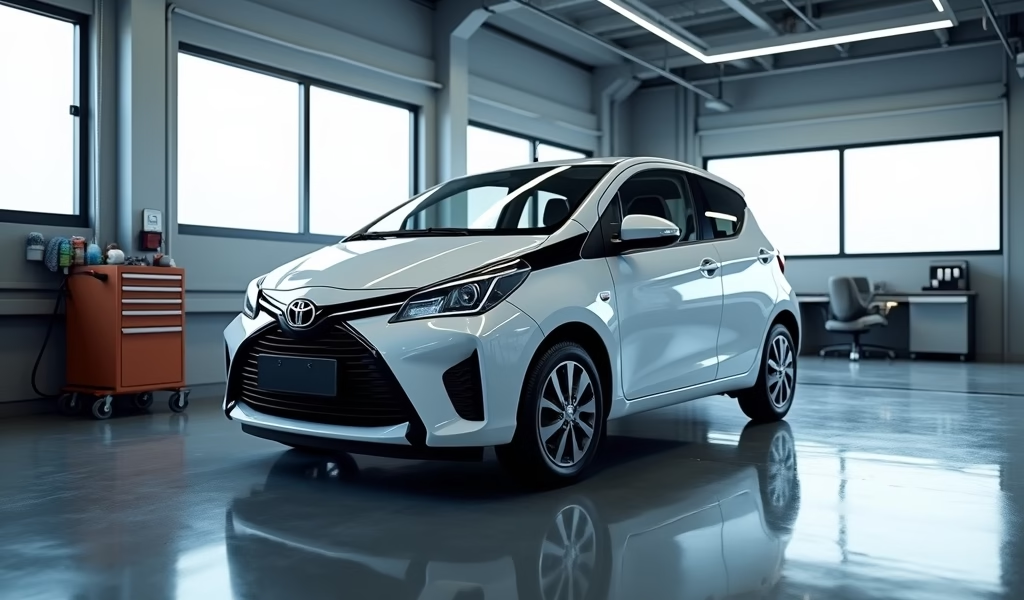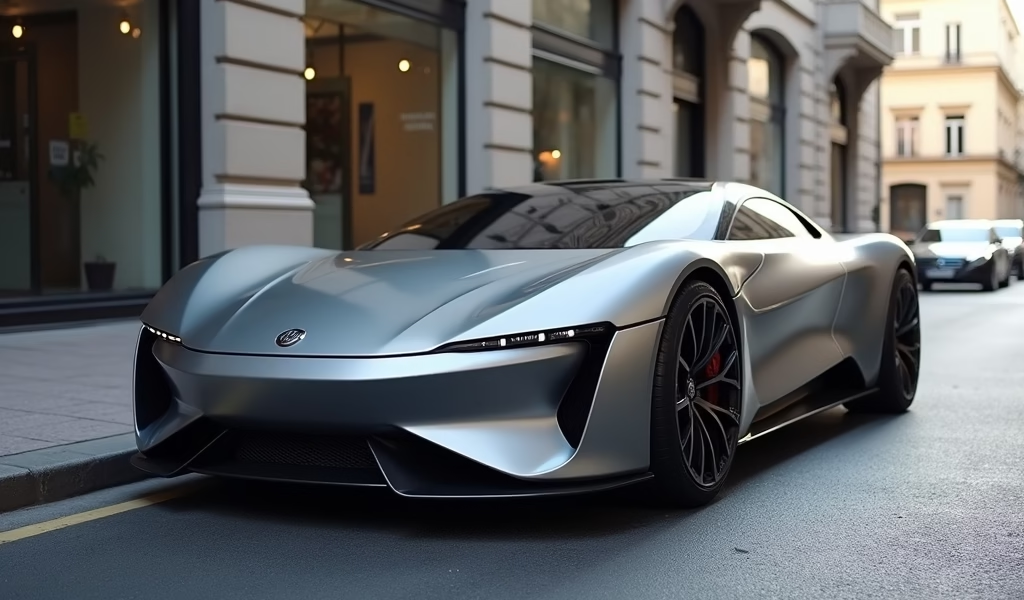Overview
This article provides expert advice on selecting, maintaining, and maximizing the value of a city car, covering everything from pre-purchase inspections to routine maintenance schedules and fuel efficiency techniques. It emphasizes that city driving presents unique challenges for vehicles, and offers specific strategies to protect your investment, including proper use of technology features and preventative care practices tailored to urban environments.
Table of Contents
- Finding Your Perfect City Car: What to Look For
- Before You Buy: The Essential Pre-Purchase Inspection
- Routine Maintenance: Keeping Your City Car Running Smoothly
- Maximizing Fuel Efficiency in Your City Car
- Navigating City Challenges: Protecting Your Investment
- Understanding Your Car’s Technology Features
- Conclusion: Getting the Most From Your New City Car
- Frequently Asked Questions
So you’re eyeing a new city car for sale? Smart move! As someone who’s spent over two decades under the hood, I can tell you that city cars are like the Swiss Army knives of the automotive world—compact, efficient, and surprisingly versatile. But here’s the thing—buying the car is just the beginning of your journey. How you care for that shiny new vehicle determines whether it’ll be your reliable companion for years or a source of headaches and depleted bank accounts.
City cars face unique challenges: stop-and-go traffic, tight parking spaces, occasional bumps and scrapes, and exposure to all sorts of urban elements. That’s why I’ve put together these five proven care tips that will help your new urban runabout stay in prime condition much longer than average. After all, the goal isn’t just to own a city car—it’s to enjoy a hassle-free relationship with it for years to come.
Finding Your Perfect City Car: What to Look For
Before diving into maintenance tips, let’s talk about choosing the right city car. The market is flooded with options, but not all city cars are created equal. When browsing a new car buying guide, pay attention to these critical factors:
- Size and maneuverability: Look for a turning radius under 35 feet—perfect for navigating tight city streets and fitting into those “how is this even a parking space?” spots.
- Fuel efficiency: City driving is notoriously hard on fuel consumption. Aim for at least 30 mpg in city conditions, with hybrids and electric options offering even better efficiency.
- Visibility: A good city car gives you clear sightlines in all directions. Those blind spots can be dangerous when pedestrians, cyclists, and scooters are darting around!
- Bumper design: This might sound odd, but sturdy bumpers that can withstand minor impacts without expensive damage are invaluable in city environments.
- Technology package: Features like parking sensors, backup cameras, and traffic-aware cruise control aren’t just luxuries in the city—they’re practical tools that protect your investment.
When test driving, simulate city conditions. Try parallel parking, navigate through tight turns, and see how the car handles at low speeds. According to Consumer Reports’ research on city vehicles, cars with good visibility and responsive brakes tend to last longer in urban environments simply because they help drivers avoid minor accidents.
Before You Buy: The Essential Pre-Purchase Inspection
Even if you’re buying brand new, don’t skip the pre-purchase inspection. I’ve seen folks so excited about that “new car smell” that they drive off without checking critical components—only to discover issues later. Here’s my checklist for a thorough inspection before signing anything:
- Check all electronic systems and make sure they’re functioning properly
- Inspect panel gaps and paint finish—inconsistencies could indicate poor assembly or prior damage
- Test all lights, signals, wipers, and climate controls
- Look under the vehicle for any signs of fluid leakage
- Verify that the VIN matches all documentation
Remember that even new cars can have manufacturing defects. Don’t feel awkward about being thorough—you’re making a significant investment! Ask the dealer about the warranty details and what exactly is covered. Some manufacturers offer specific coverage for city-related issues like parking sensors and bumper damage that others might consider “wear and tear.”
Taking your time during this phase can save you thousands down the road. As the saying goes in the shop: “An hour of inspection prevents a month of repairs.”

Routine Maintenance: Keeping Your City Car Running Smoothly
City driving is particularly hard on vehicles. The constant stopping and starting, short trips, and variable speeds put extra stress on nearly every system in your car. That’s why routine maintenance isn’t just a recommendation—it’s essential for longevity.
Here’s my enhanced maintenance schedule specifically for city cars:
- Oil changes: Every 5,000 miles or 6 months, whichever comes first. City driving creates more contaminants in your oil.
- Air filters: Check every 3 months. Urban environments have higher particulate matter that clogs filters faster.
- Brake inspection: Every 10,000 miles. City driving is brutal on brakes due to frequent stopping.
- Tire rotation: Every 5,000 miles, with pressure checks monthly. Uneven city roads and frequent turning wear tires irregularly.
- Battery testing: Twice yearly. The constant starting and stopping in city traffic is particularly hard on batteries.
One maintenance tip most dealers won’t tell you: city cars benefit enormously from an occasional highway drive. I call it the “Italian tune-up.” Taking your city car on a 30-minute highway drive once a month helps burn off carbon deposits that accumulate during short trips and allows systems to reach optimal operating temperatures.
When choosing where to buy a car, consider dealers that offer complimentary maintenance programs. Some manufacturers now include the first 2-3 years of scheduled maintenance, which can save you considerable money while ensuring your city car gets professional attention from people who know it best.
Maximizing Fuel Efficiency in Your City Car
Let’s face it—fuel efficiency is probably one of the main reasons you’re looking at a city car in the first place. But even the most efficient models can guzzle gas if driven improperly in urban environments. Here are my top tips for squeezing every mile from your tank:
- Master the gentle start. Aggressive acceleration from stoplights can increase fuel consumption by up to 40%.
- Anticipate traffic flow. Looking ahead and gradually slowing instead of braking hard saves fuel and brake pads.
- Maintain proper tire pressure. Even being 5 PSI low can reduce fuel economy by 3%.
- Use air conditioning selectively. Below 40 mph, open windows are more efficient; above that speed, AC is actually more economical due to aerodynamic drag.
- Remove unnecessary weight. That trunk full of “just in case” items could be costing you at the pump.
Modern city cars often come with eco-driving modes and real-time efficiency displays. Don’t dismiss these as gimmicks! A study by the U.S. Department of Energy found that drivers who use feedback systems improve their fuel economy by an average of 10%.
If you’re looking at the best cars of 2025, you’ll notice many new city models feature mild hybrid systems. These use small electric motors to assist the gasoline engine during acceleration—precisely when city cars consume the most fuel. These systems typically add only a modest premium to the purchase price but can save 15-20% in city driving conditions.
Navigating City Challenges: Protecting Your Investment
City living throws unique challenges at your vehicle. From tight parking garages to road debris and the occasional parallel parking mishap, urban environments can be tough on cars. Here’s how to protect your investment:
- Consider clear paint protection film for the front end, door edges, and other high-contact areas.
- Invest in all-weather floor mats that contain spills and urban grime.
- Apply a quality wax every three months to protect against environmental contaminants.
- Use door edge guards to prevent chips in tight parking situations.
- Consider a dashboard cover to prevent UV damage, especially if street parking is your only option.
One trick I recommend to all my clients: keep a microfiber cloth and detail spray in your glove box. Bird droppings and tree sap contain acids that can permanently damage paint if left for even a few days. A quick wipe-down when you notice these contaminants can save you hundreds in paint correction later.
And here’s something you might not think about: your parking routine. Consistently parking in the same orientation means the same parts of your car are always exposed to sun damage. If possible, vary how you park to distribute UV exposure more evenly across your paint and interior.

Understanding Your Car’s Technology Features
Modern city cars are packed with technology that can extend vehicle life and improve your driving experience—if you know how to use it properly. I’ve seen too many folks underutilize these features or, worse, disable them out of frustration.
Take the time to master these common city car technologies:
- Start-stop systems: These automatically shut off the engine at stoplights to save fuel. They’re designed for frequent cycling, so don’t disable them out of concern for the starter—modern starters are built for this specific purpose.
- Parking sensors and cameras: Keep these clean! A quick wipe with a damp cloth ensures they function properly when you need them most.
- Regenerative braking: In hybrids and EVs, understanding how to maximize energy recovery through proper braking technique can significantly extend your range.
- Infotainment systems: Beyond entertainment, these often include navigation features that can route you around traffic, saving wear and tear from idling.
- Tire pressure monitoring: Don’t ignore those warnings! Even slight underinflation accelerates tire wear and reduces fuel economy.
I recommend scheduling a “technology orientation” session at the dealership within a week of purchase. Most dealers offer these follow-up appointments, and they’re invaluable for learning the quirks of your specific model. Bring a notebook and don’t be afraid to ask “silly” questions—the only silly question is the one you don’t ask!
According to J.D. Power’s research, drivers who fully understand their vehicle’s technology report significantly higher satisfaction and are more likely to purchase the same brand again. That’s not just good for manufacturers—it means these owners are getting more value from their vehicles.
Conclusion: Getting the Most From Your New City Car
A new city car for sale represents more than just transportation—it’s a significant investment in your daily comfort, convenience, and peace of mind. By following these five proven care tips, you’re setting yourself up for years of trouble-free ownership and maximum value retention.
Remember that the urban environment poses unique challenges to vehicles, but with proper maintenance, thoughtful driving habits, and preventative care, your city car can thrive where others struggle. The key is consistency—small efforts applied regularly yield tremendous results over the life of your vehicle.
Whether you’re commuting through crowded streets, squeezing into tight parking spaces, or taking the occasional weekend getaway, your city car can handle it all with aplomb when properly cared for. The relationship between driver and vehicle is symbiotic—give your car the attention it deserves, and it will reward you with reliable performance when you need it most.
Now go enjoy that new city car! And if you see me in the shop, stop by to tell me how these tips worked out for you—I’m always eager to hear success stories from careful owners.
Frequently Asked Questions
How often should I service my new city car?
Follow the manufacturer’s maintenance schedule, but for city driving, consider oil changes every 5,000 miles rather than the standard 7,500. Short trips and stop-and-go traffic create more engine stress that requires more frequent maintenance.
Are city cars more expensive to maintain than highway-driven vehicles?
City cars typically require more frequent brake service and may need transmission maintenance sooner. However, their simpler designs and smaller components often mean lower overall repair costs compared to larger vehicles.
What’s the best city car for tight parking situations?
Look for cars with a turning radius under 35 feet and length under 13 feet. Models like the Mini Cooper, Fiat 500, and Honda Fit are renowned for their parkability in cramped urban environments.
How can I prevent door dings in crowded city parking?
Install door edge guards and consider magnetic door protectors for parking situations. Whenever possible, park at the end of rows or next to fixed objects like walls on one side.
Are electric vehicles better city cars than gas-powered ones?
Electric vehicles excel in city environments due to regenerative braking and zero emissions at idle. Their instant torque also makes navigating traffic easier, while their simpler drivetrains typically require less maintenance than internal combustion engines.

